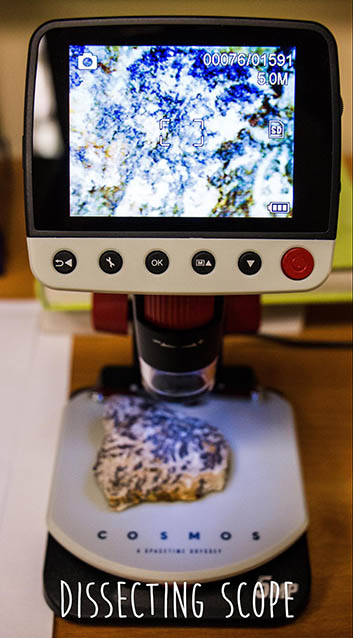
NPS Photo/ M.Reed
We are travelling back in time this week on #sciencedeskdigs. Maria Caffrey, a climatologist who studies ancient microfossils like pollen, diatoms, and charcoal, tells us what we can learn from the past.
Tell us more!
I work mostly with ancient pollen. Researchers collect sediment cores from wetlands and lakes. Using specific chemicals, climatologists dissolve the sediment, leaving the pollen behind to study. We study the pollen to understand what the environment was like in the past. Then we use that knowledge to predict how the environment will respond to future changes.
This particular dissecting scope shows a rock that has a dendritic psilomelane (a manganese oxide) in it. Sometimes we find manganese oxides (that black stuff) in our cores. I also often use the dissecting scope to look at charcoal to ID what plants burned in the past.
By studying past climates through microfossils we can model future climates. Knowing future climates is important because we can predict potential floods or sea level rise which can greatly affect people. For example, I just mapped the sea level rise in our nation’s capital and now we will be able to predict any devastating events that may occur and warn people.

Courtesy of Maria Caffrey
Describe your workspace in one word
Innovative. We are always trying to think of new ways to answer questions about past and future climates.
Last updated: June 16, 2020
